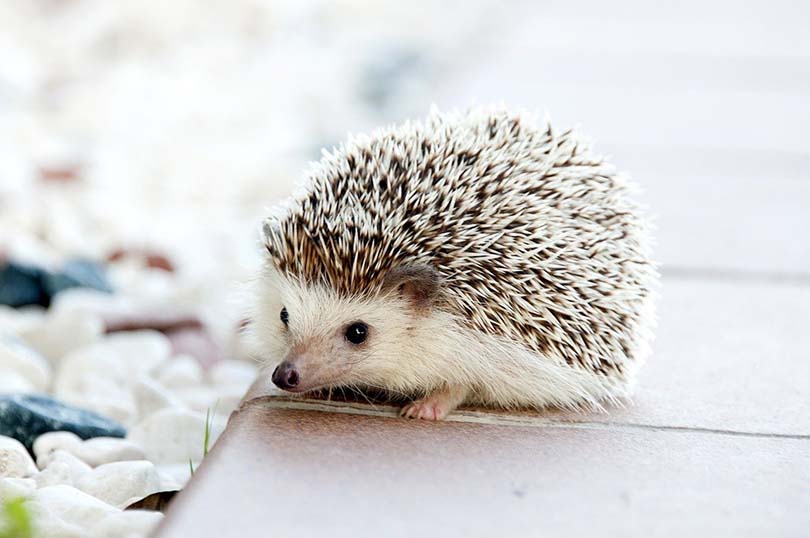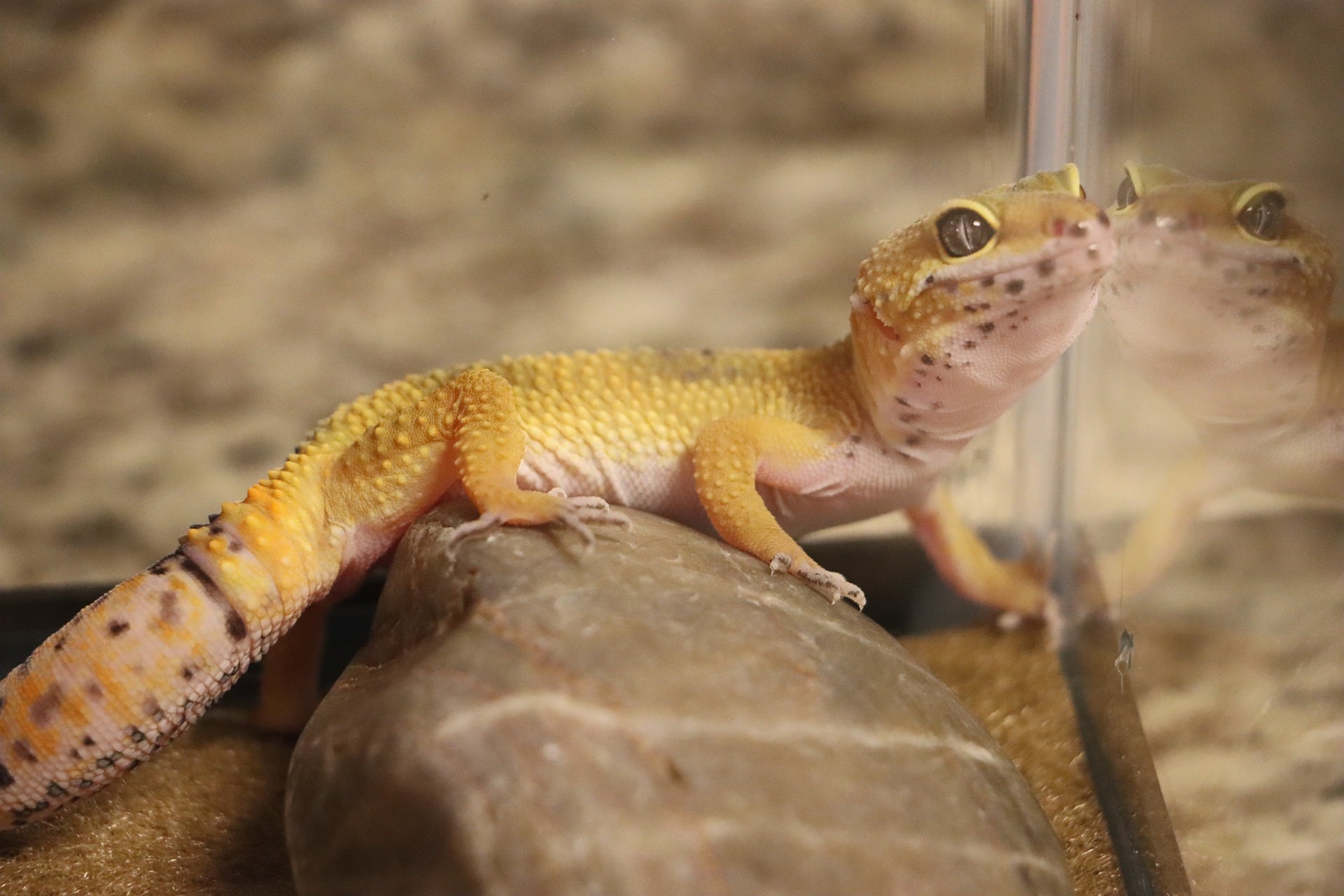
Click to Skip Ahead
There are usually some differences between males and females, regardless of the type of animal or species, and hedgehogs are no exception. Hedgehogs are interesting little critters that have grown in popularity as exotic pets over the last few years. There are 17 types of hedgehogs, and they all vary in some ways. Not all species of hedgehogs are domesticated, and you may require a permit to own one, depending on where you live.
In this article, we’ll examine the differences between the male and female hedgehog. If you’re thinking about getting one, we hope this article helps you decide which sex to choose to suit your needs.
 Visual Differences
Visual Differences

Male Hedgehog Overview

Personality / Character
The male hedgehog, known as a boar, tends to do better living independently. If you have two males, odds are you will see some aggression between the two at some point. Male hedgehogs can be territorial, so caging them together is not recommended. Housing an intact male with an intact female is also not feasible because they will mate. This does not apply if you are breeding them, as the females can get pregnant quickly
Training
When it comes to training, hedgehogs are certainly different than dogs, but they can be trained to use a litter box inside their cage. The best way to start training is by observing where they like to potty. Once you’ve discovered the location in the cage, set a tissue box or something similar in the same spot with some litter. You may even want to put some droppings in the litter to help your hedgie along. It takes patience, and not every hedgie will catch on, but with time and consistency, your hedgehog may use the litter box. Be sure to keep their food and water away from the litter box for hygienic purposes.

Health & Care
There are a few health concerns that come with owning a male hedgehog.
Breeding
The recommended age to start breeding a male is at 4 months of age. Ensuring the male is healthy is also important. Avoid mating a male and female that are closely related to prevent inbreeding. After mating, remove the female from the male’s cage; males should only be in the same cage with a female for mating purposes. You should also remove any toys or wheels from the cage to ensure mating occurs.
Female Hedgehog Overview

Personality / Character
The female hedgehog, known as a sow, will have the same personality and character as the male. Females are known to better cohabitate than males, meaning they prefer to have a cage mate. Unlike the male, female hedgehogs do quite well being caged with other females. They will even miss each other if separated. Of course, not all females will be so accepting of other females. They may try to show dominance by butt biting or mounting.
Some hedgehogs are lazier than others. For example, if you cage an active female with a more passive female, things could get ugly. It’s important to monitor their behavior initially to determine if they can live together in harmony.
Training
We’ve mentioned it’s possible to train your hedgehog to use a litter box. There’s no difference between males and females when it comes to training. Some hedgies will be easy to litter box train, and others won’t. It’ll just depend on your individual hedgie. Remember that patience and consistency are key.

Health & Care
Below are health concerns to watch for regarding the female hedgehog.
Breeding
Females can conceive at 6 weeks of age, although it’s not healthy or recommended at such a young age. Breeding between 6 and 12 months is ideal because menopause occurs in females around 2 ½ to 3 years of age. You’ll also want to ensure your female is healthy before breeding to ensure her safety. Your veterinarian can examine your female to ensure everything’s a go.
Hedgehogs 101
Hedgehogs are small, spiny animals that are considered exotic pets. They hail from Asia, Africa, and Europe. They can live anywhere from 4 to 7 years in captivity, depending on their diet and genetics. It’s important to feed your pet hedgehog a balanced diet to avoid obesity. They are nocturnal critters and are active at nighttime. During the day, they can sleep up to 18 hours with no problem.
Hedgehogs have roughly 3,000 to 5,000 quills on their bodies that they use for a defense mechanism. The quills resemble porcupine quills; however, they do not lose them if used as a form of defense, unlike the porcupine. The quills are also non-poisonous. Hedgehogs also can roll up into a ball, resembling a pincushion; even a predator cannot open the ball.
With over 17 species of hedgehogs, it’s challenging to determine what length and size your pet hedgie will be. The African Pygmy is considered the most common as a pet. This species is the smallest and usually weighs about a pound. They have four toes and white bellies.
If you have allergies, hedgehogs make great pets because they are considered hypoallergenic. Because of the quills, they do not shed dander, making them an excellent choice for the allergy sufferer.
Did you know that hedgehogs communicate? They communicate by hissing if they’re grumpy and snuffling if they’re involved in checking out their surroundings. Learning their sounds can help you determine what type of mood they’re in.

How to Tell the Sex of a Hedgehog
It can be tricky determining the sex of your hedgehog, but if you know what to look for, you can specify if you have a boy or girl. In males, the penis is hidden in a penile sheath that sits in the mid-abdominal region. To get a visual, it resembles a large belly button. The testicles are not visible, as they are hidden in the abdomen.
The female reproductive organs are adjacent to the anus, and the female will not have the “belly button” bump on the abdomen like in males.

Which Sex Is Right for You?
When it comes to selecting a sex, there’s not much difference between a male and female hedgehog, except their reproductive systems, of course. As far a temperament, they are not much different, except males can be more aggressive with other males. Whether you have a male or female, they all have their own little personalities. As a rule, picking a sex is really based on personal preference. If you already own a hedgehog, the sex you select will be of more importance, especially if you want to cage them together.
Remember, two males will not do well caged together; however, females do rather well living together and may even prefer a cage mate. And only cage a male and female together for breeding purposes.
Featured Image Credit: Top – Michal Sloviak, Shutterstock | Bottom – slowmotiongli, Shutterstock
 Visual Differences
Visual Differences





